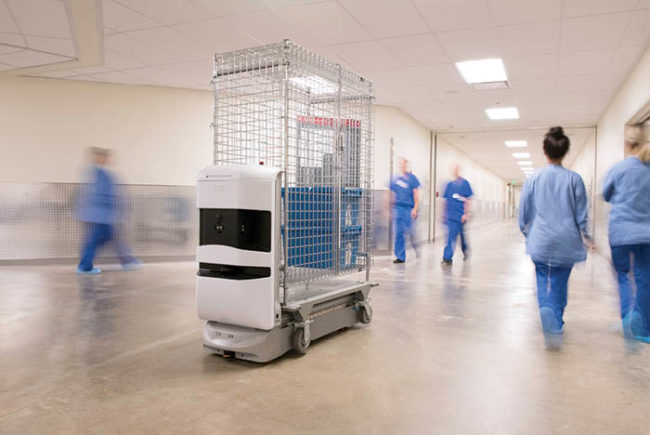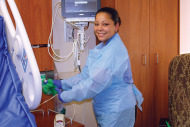Although it’s a comparatively new technology when held against long-trusted cleaning agents, automated disinfection systems using ultraviolet (UV) light have gained a considerable amount of credibility regarding their efficacy.
In fact, a number of studies have been published in recent years supporting their use in health care facilities. A study conducted by Duke University and the University of North Carolina examined four cleaning methods, including three enhanced strategies. Their data showed that patient rooms treated with UV-C-emitting devices resulted in lower multidrug-resistant infections. But rather than using UV light or other automated technologies as the end-all, be-all of disinfection, hospitals that use these tools say they see it as part of a well-rounded environmental services (ES) program.
Iris Verdi, environmental services manager at Overlook Medical Center in Summit, N.J., echoes the same logic. The 504-bed medical center participated in a Joint Commission project to eliminate infection-prevention barriers. She evaluated different technologies to enhance the facility’s cleaning protocols and developed a team-based ES strategy coupled with robotic UV technology. Bringing in the new technology helped the medical center to realize a 35 percent reduction rate of Clostridium difficile infections within targeted units.
“The more we utilized the robots, the more infections we were preventing,” Verdi says.
But with the increasing number of products coming into the automated disinfection market, it can be difficult to know where to start when selecting the right one for a given health care facility. In "Selecting and implementing a UV disinfection system," ES consultant Thomas A. Peck provides six steps that environmental services leaders can check as they filter through the litany of products on the market. These six steps — ranging from acquiring proper funding to researching training needs and finally monitoring post-implementation progress — can help health facilities to ensure they are using a technology suited to their own infection prevention goals.





